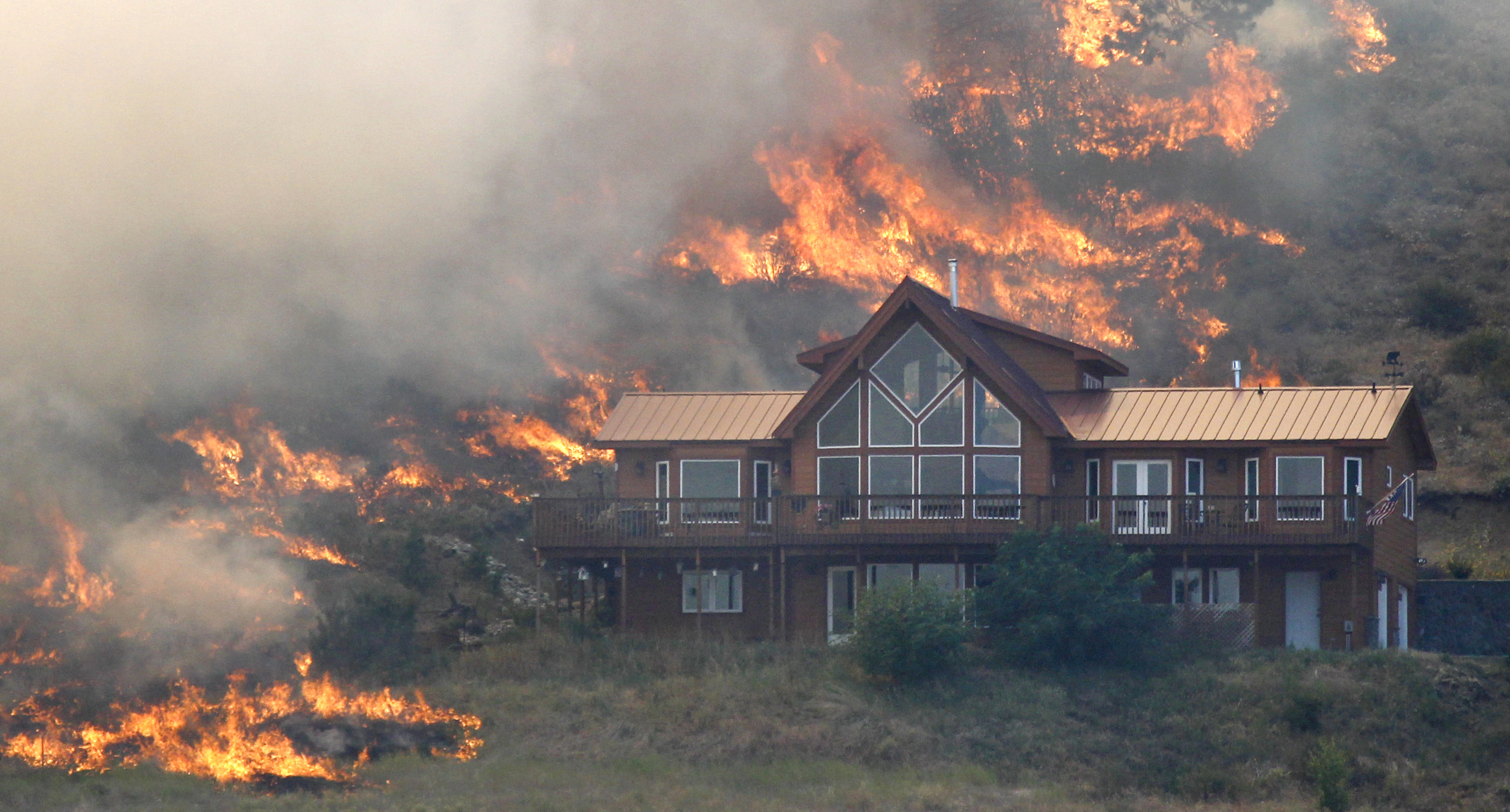By SUSAN MONTOYA BRYAN
Associated Press
ALBUQUERQUE, N.M. - If lightning strikes in the New Mexico wilderness and starts a fire, the blaze would normally be little more than a blip on the radar of land managers who have earned a reputation for letting flames burn to keep forested lands from growing into a tangled mess.
This season is different. Now firefighters are trekking deep into the Gila National Forest with trains of equipment-carrying horses and one overriding goal: snuffing out all fires, no matter how small or remote.
The U.S. Forest Service's decision is temporary. But after years of upholding fire's natural ability to clean up the landscape, the agency's about-face has drawn criticism from watchdog groups, some scientists and others who fear the agency might be setting the stage for an even more destructive season next year.
"At a time of both drought in the interior West and overall increases in average global temperatures, we will be seeing more fire on the landscape and not less. Yet this policy attempts to put our hands over our eyes and deny that reality," said Andy Stahl, executive director of Forest Service Employees for Environmental Ethics.
"Rather than making our landscapes more fire resilient, we're going to return to the mid-20th century approach and earlier of trying to stamp out every fire, which we can't do," he added.
Forest Service officials acknowledge that decades of fire suppression have combined with drought, a changing climate and invasive insects to turn much of the West into a tinder box. The decision was purely financial.
"We don't want to do this long-term," said Forest Service Deputy Chief Jim Hubbard. "We know being able to use fire makes good sense, and we know some forests are very good at it. And in their ecosystems, it's the thing they should be doing."
However, the agency can't afford to let fires smolder week after week, constantly consuming firefighting resources as crews monitor the flames. Putting out fires quickly costs less, Hubbard said.
Fire suppression now accounts for more than half of the Forest Service's budget. This year, the agency had $948 million to get the job done, but projections show costs will actually come closer to $1.4 billion by season's end.
Critics claim it costs more to use slurry bombers and water-dropping helicopters to attack flames far from communities than to let fires burn in places like the Gila or Montana's Bob Marshall Wilderness.
Since the 1970s, managers of the Gila Forest have been letting fires burn when conditions allow. Researchers say that practice helped minimize the severity of a blaze that blackened more than 450 square miles of the forest earlier this summer. Although it was the largest fire in New Mexico's recorded history, experts believe most of the burned areas have a good chance at recovery.
The Forest Service's new directive also carries another complication: the risk to firefighter and air crews battling blazes that otherwise would have been allowed to burn, Stahl said.
On Sunday, a 20-year-old firefighter was killed by falling debris while her crew fought what officials believed was a 50-acre fire. The flames were threatening commercial timberland.
Despite the call to put out all fires, Hubbard said forest supervisors can let fires burn under certain circumstances, including cases where sending in crews would be too dangerous.
Across the West, only one fire - deep in the Teton Wilderness in Wyoming - is being allowed to burn.
Everything else is being snuffed out, including the lightning-sparked fires in the Gila Forest, where about four dozen blazes have been reported since early July. No homes have been threatened.
Still, any fire could turn out to be the next monster, given the dry conditions, said Mike Wheelock, a former smokejumper and president of a private Oregon-based firefighting firm.
"We need to fight these fires aggressively early on rather than wait until they come roaring out of the wilderness," he said.
New Mexico and Colorado are slowing down after record-setting fire seasons, but fire activity is ramping up in California, Nevada, Oregon, Idaho and Montana. On Wednesday, 11 new large fires were reported across the region. Another nine were added Thursday.
Matthew Rollins, the wildland fire science coordinator with the U.S. Geological Survey's National Center in Virginia, said fires in remote areas can't be underestimated.
"Given the extreme drought and the fact that resources are stretched from California to Idaho, it's a really significant risk right now if you get an ignition and let it burn," he said. "Somebody has to take that risk on, and it could have dire consequences."
Stahl said the directive didn't help in Colorado, where hundreds of homes burned despite firefighting efforts.
He said suppression costs have skyrocketed for the Forest Service over the last decade, and the agency's pace of spending is more than triple that of other land-management agencies within the Interior Department. He questioned whether boosting firefighting efforts this season would serve to increase next year's fire-suppression budget.
Rollins, who has studied the Gila's fire ecology over the years, said one year of fire suppression won't undo decades of active fire management. But the fire-management world is abuzz about what the reversal could mean for the future.
The Forest Service blames increased development of homes and businesses on the edge of the forest for increasing costs.
"This isn't going to be something financially that we probably solve anytime soon," Hubbard said. "So we're going to have to have some discussions about operations."
